Spring Boot 中的 4 大组件分别是:Spring Boot Starter、Spring Boot Autoconfigure、Spring Boot CLI 以及 Spring Boot actuator,接下来,我们分别来看他们的使用和作用。
1.Spring Boot Starter
1.1 Starter的应用示例
<dependency><groupId>org.springframework.boot</groupId><artifactId>spring-boot-starter-thymeleaf</artifactId>
</dependency><dependency><groupId>org.mybatis.spring.boot</groupId><artifactId>mybatis-spring-boot-starter</artifactId><version>1.3.2</version>
</dependency>
在我们的Spring Boot项目种的POM文件中总会看到这两种依赖:
spring-boot-starter-xxx 和 xxx-spring-boot-starter。
这就是spring boot的四大组件之一的starter。
a、spring-boot-starter-thymeleaf

b、mybatis-spring-boot-starter
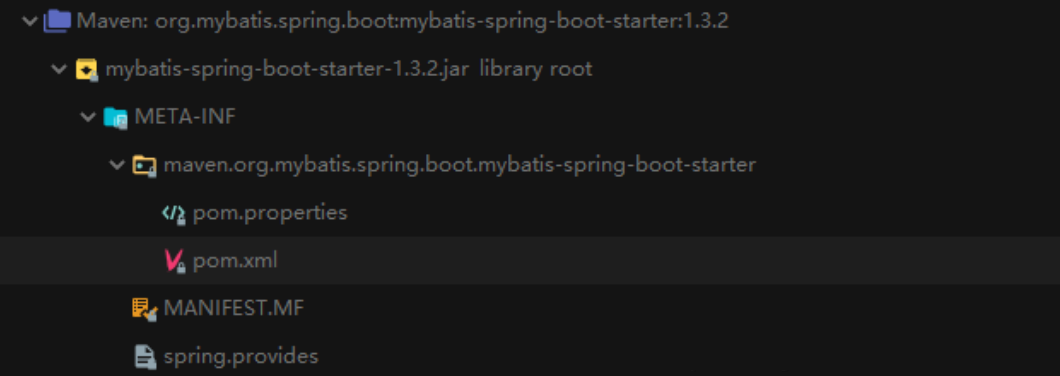
两种starter的区别:
官方提供的starter是这样的:spring-boot-starter-xxx
非官方的starter是这样的:xxx-spring-boot-starter
其中xxx就是我们想要依赖的组件或者jar包。上例就是我们spring boot用来引入thymeleaf引擎和mybatis框架所配置的依赖。引入之后通过简单的约定配置就可以正常使用。比如:
Thymeleaf引擎约定配置:
##前端引擎配置
spring:thymeleaf:enabled: trueservlet:content-type: text/htmlmode: HTML## 页面前缀prefix: classpath:/templates/## 后缀suffix: .html
Mybatis约定配置:
mybatis:mapper-locations: classpath:mapper/*.xml #注意:一定要对应mapper映射xml文件的所在路径type-aliases-package: com.hi.ld.vo.system # 注意:对应实体类的路径configuration:log-impl: org.apache.ibatis.logging.stdout.StdOutImpl
下面让我们来看看以前怎么配置thymeleaf。
1.2 Spring Boot之前的Thymeleaf和Mybatis应用
废话不多说,直接上代码:
1.2.1 Thymeleaf配置
a. 添加对应依赖:
<dependency><groupId>org.thymeleaf</groupId><artifactId>thymeleaf-spring5</artifactId><version>3.0.11.RELEASE</version>
</dependency>
<dependency><groupId>org.thymeleaf.extras</groupId><artifactId>thymeleaf-extras-java8time</artifactId><version>3.0.4.RELEASE</version>
</dependency>
b. bean配置
<bean id="templateResolver"class="org.thymeleaf.templateresolver.ServletContextTemplateResolver"><property name="prefix" value="/WEB-INF/templates/" /><property name="suffix" value=".html" /><property name="templateMode" value="HTML5" />
</bean><bean id="templateEngine"class="org.thymeleaf.spring4.SpringTemplateEngine"><property name="templateResolver" ref="templateResolver" />
</bean><bean class="org.thymeleaf.spring4.view.ThymeleafViewResolver"><property name="templateEngine" ref="templateEngine" />
</bean>
1.2.2 Mybatis配置
a. 添加对应依赖:
<dependency><groupId>org.springframework.boot</groupId><artifactId>spring-boot-starter-jdbc</artifactId></dependency><dependency><groupId>org.mybatis</groupId><artifactId>mybatis</artifactId></dependency><dependency><groupId>org.mybatis</groupId><artifactId>mybatis-spring</artifactId></dependency>
b. bean配置
下面的第3, 4步骤就是Mybatis相关配置。第一步是引入资源配置。第二步是配置数据源
<?xml version="1.0" encoding="UTF-8"?>
<beans xmlns="http://www.springframework.org/schema/beans"xmlns:xsi="http://www.w3.org/2001/XMLSchema-instance" xmlns:context="http://www.springframework.org/schema/context"xsi:schemaLocation="http://www.springframework.org/schema/beanshttp://www.springframework.org/schema/beans/spring-beans.xsdhttp://www.springframework.org/schema/contexthttp://www.springframework.org/schema/context/spring-context.xsd"><!-- 配置整合mybatis过程 --><!-- 1.配置数据库相关参数properties的属性:${url} --><context:property-placeholder location="classpath:jdbc.properties" /><!-- 2.数据库连接池 --><bean id="dataSource" class="com.mchange.v2.c3p0.ComboPooledDataSource"><!-- 配置连接池属性 --><property name="driverClass" value="${jdbc.driver}" /><property name="jdbcUrl" value="${jdbc.url}" /><property name="user" value="${jdbc.username}" /><property name="password" value="${jdbc.password}" /><!-- c3p0连接池的私有属性 --><property name="maxPoolSize" value="30" /><property name="minPoolSize" value="10" /><!-- 关闭连接后不自动commit --><property name="autoCommitOnClose" value="false" /><!-- 获取连接超时时间 --><property name="checkoutTimeout" value="10000" /><!-- 当获取连接失败重试次数 --><property name="acquireRetryAttempts" value="2" /></bean><!-- 3.配置SqlSessionFactory对象 --><bean id="sqlSessionFactory" class="org.mybatis.spring.SqlSessionFactoryBean"><!-- 注入数据库连接池 --><property name="dataSource" ref="dataSource" /><!-- 配置MyBaties全局配置文件:mybatis-config.xml --><property name="configLocation" value="classpath:mybatis-config.xml" /><!-- 扫描entity包 使用别名 --><property name="typeAliasesPackage" value="com.soecode.lyf.entity" /><!-- 扫描sql配置文件:mapper需要的xml文件 --><property name="mapperLocations" value="classpath:mapper/*.xml" /></bean><!-- 4.配置扫描Dao接口包,动态实现Dao接口,注入到spring容器中 --><bean class="org.mybatis.spring.mapper.MapperScannerConfigurer"><!-- 注入sqlSessionFactory --><property name="sqlSessionFactoryBeanName" value="sqlSessionFactory" /><!-- 给出需要扫描Dao接口包 --><property name="basePackage" value="com.soecode.lyf.dao" /></bean>
</beans>
1.2.3 小结
a、Starter 帮我们封装好了所有需要的依赖,避免我们自己添加导致的一些Jar包冲突或者缺少包的情况;
b、Starter帮我们自动注入了需要的Bean实例到Spring 容器中,不需要我们手动配置(这个可以说是starter干的,实际上并不是,这里埋个坑,下面解答);
所以: starter包的内容就是pom文件,就是一个依赖传递包。
2.Spring Boot Autoconfigure
2.1 autoconfigure 简介
autoconfigure在我们的开发中并不会被感知,因为它是存在与我们的starter中的。所以我们的每个starter都是依赖autoconfigure的:
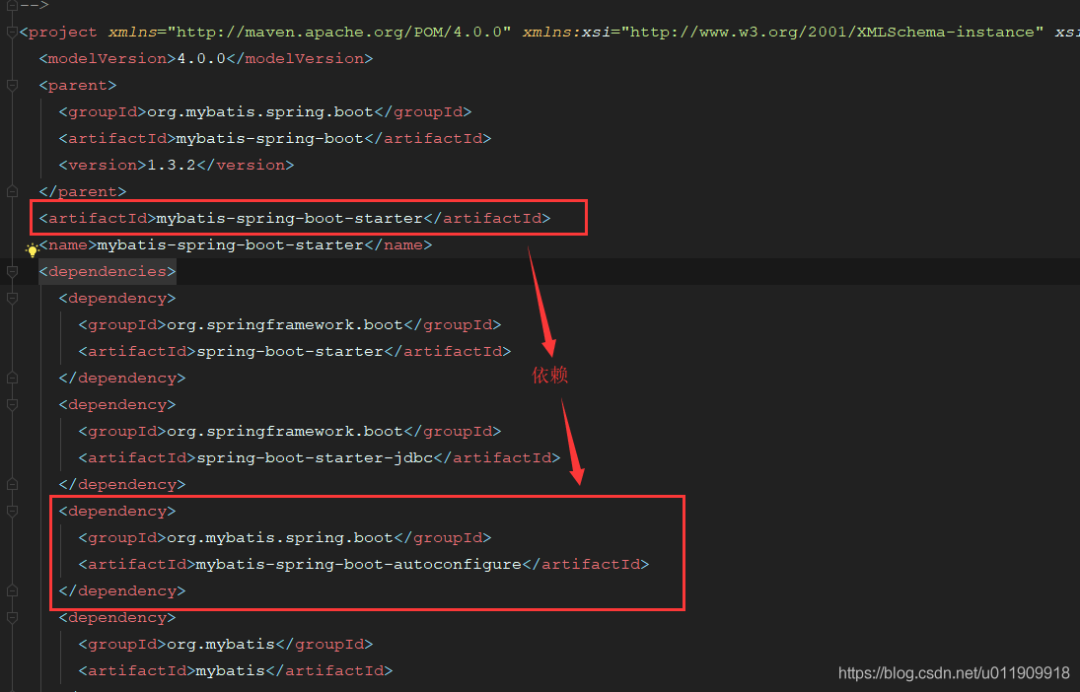
当然我们也可以把autoconfig的内容直接放在starter包里边。
a. spring-boot-autoconfigure:
注意:这里有个点,就是官网提供的configure大多数在spring-boot-autoconfigure包里边,并没有单独创建新包。

b、mybatis-spring-boot-autoconfigure
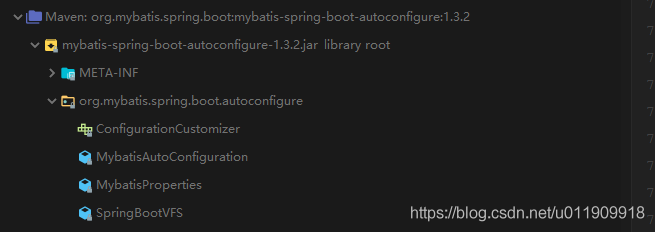
2.2 小结
autoconfigure内容是配置Bean实例到Spring容器的实际代码实现包,然后提供给starter依赖。所以说1.2.3中的b项所说的配置Bean实例到Spring容器中实际是autoconfigure做的,因为是starter依赖它,所以也可以说是starter干的。
所以:autocinfigure是starter体现出来的能力的代码实现
3.Spring Boot CLI
Spring Boot CLI是一个命令行使用Spring Boot的客户端工具;主要功能如下:
运行groovy脚本 => 官网2.1
打包groovy文件到jar => 官网2.3
初始化Spring Boot项目 => 官网2.4
其他
先上个官网文档:
https://docs.spring.io/spring-boot/docs/current/reference/html/spring-boot-cli.html
因为这个我们用的比较少,所以就不多赘述了。个人感觉比较流脾的功能就是命令行直接执行groovy脚本了。
4.Spring Boot actuator
actuator是Spring Boot的监控插件,本身提供了很多接口可以获取当前项目的各项运行状态指标。
官网文档:
https://docs.spring.io/spring-boot/docs/2.4.0/reference/html/production-ready-features.html#production-ready
名词解释:
Endpoints: 需要监控的端点。参考官网第二节官网文档
可用的端点:
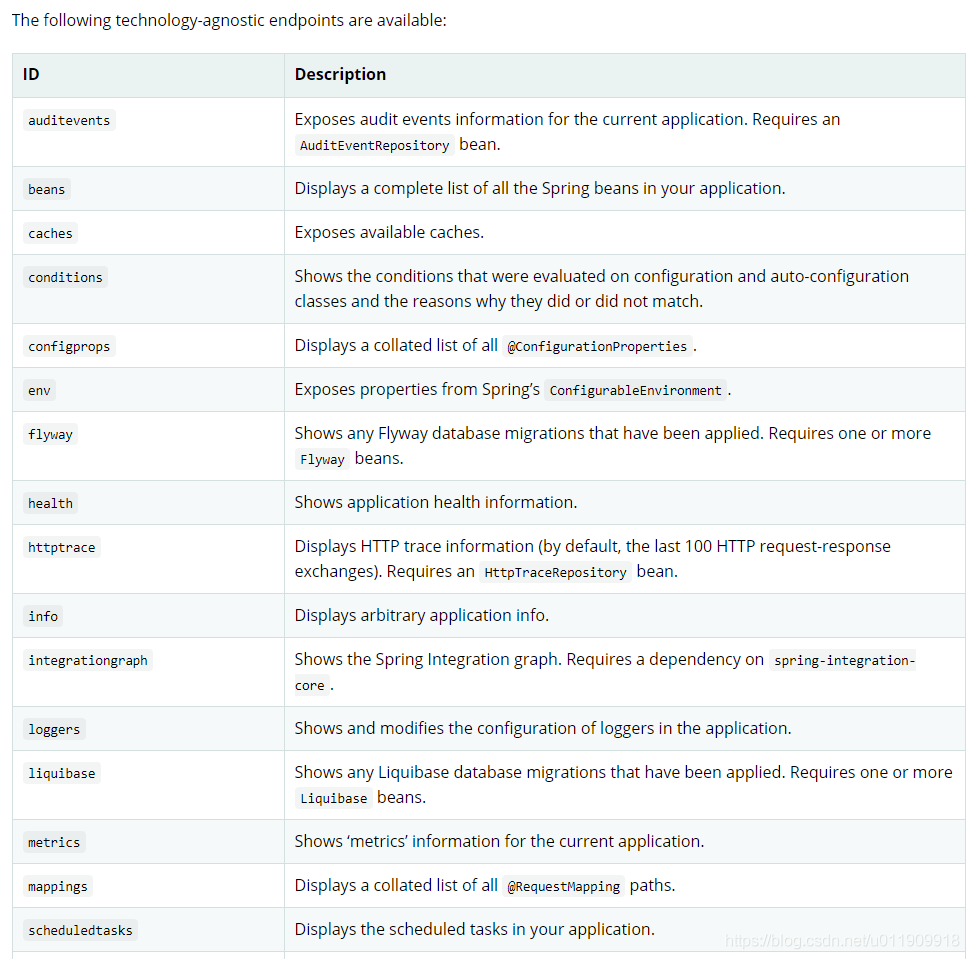

下方的是web工程的端点。
使用方法如下:
4.1 添加依赖
<dependency><groupId>org.springframework.boot</groupId><artifactId>spring-boot-starter-actuator</artifactId>
</dependency>
4.2 配置需要开启监控的端点
management:endpoint:health: ## 开启健康监控端点enabled: truebeans: ## 开启Bean实例监控端点enabled: true
4.3 启动服务并验证
4.3.1 启动结果

4.3.2 查看各个监控信息
浏览器访问(查看监控信息地址):http://localhost:9500/actuator
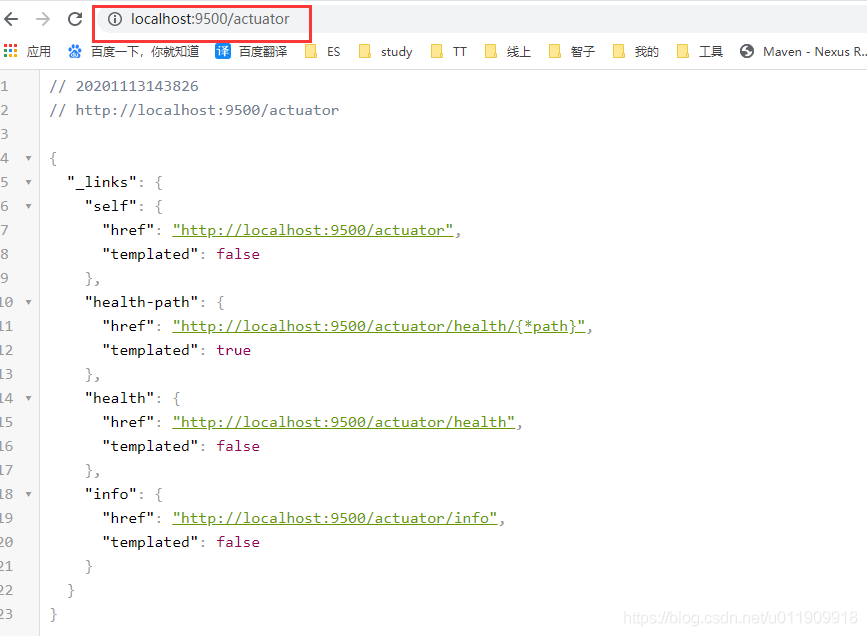
查看服务健康状态:
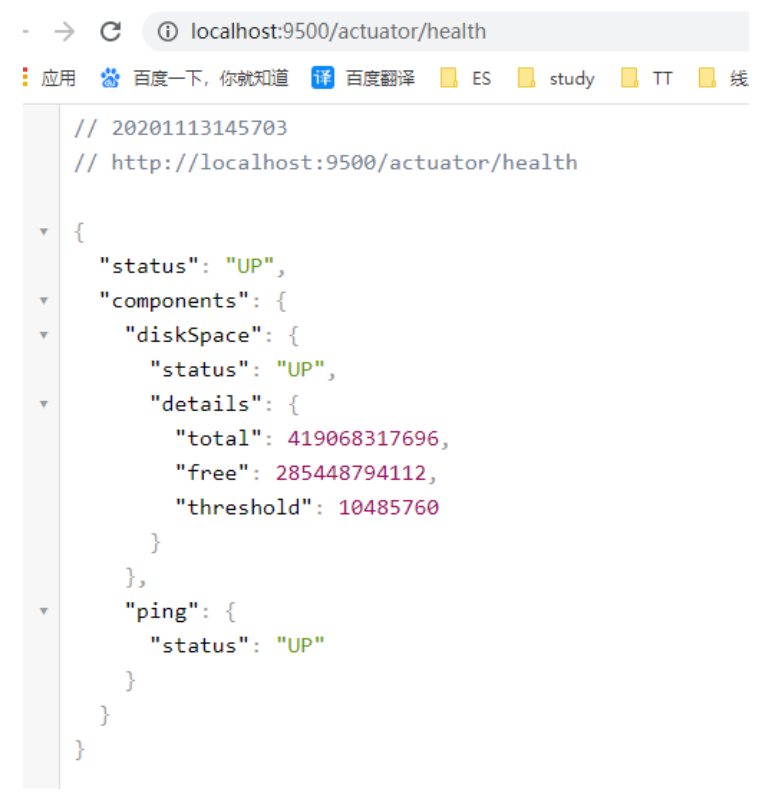
其他API查看官方文档了解了。
总结
本章主要介绍了Spring Boot的四大组件的作用,其中主要是starter和autoconfigure,另外的CLI和actuator用的并不多,需要深入了解的小伙伴可以查看官方的API文档。
上期送书活动中奖名单
恭喜以下三位:
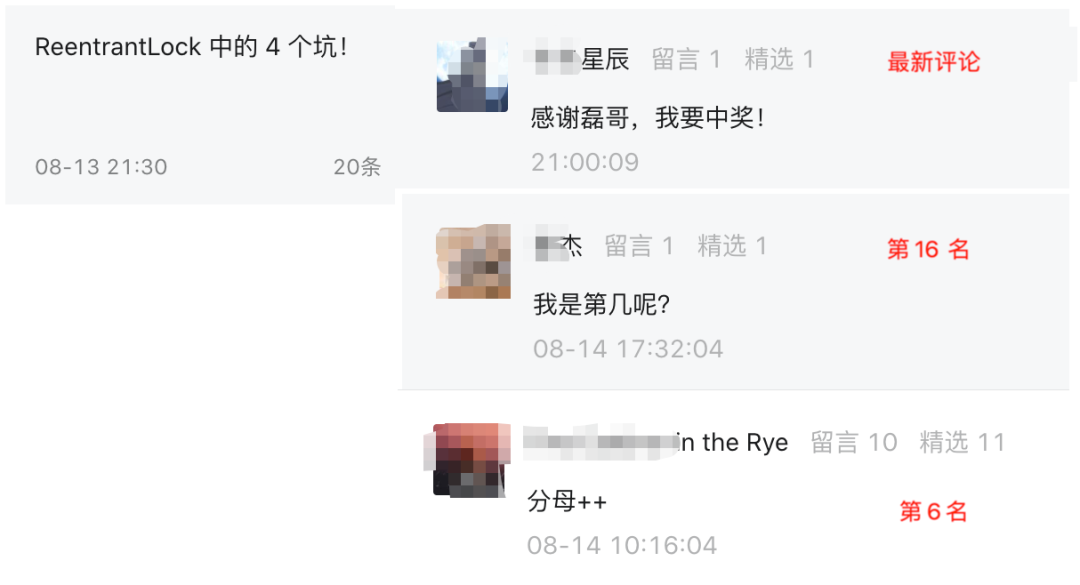
上期中奖规则为:第 6 名、第 16 名、第 26 名留言的用户,因为总留言数只有 20 条,所以把第 26 名中奖的用户直接改为最新留言的用户,恭喜以上三位。请以上中奖的用户加磊哥的微信号:GG_Stone 发送中奖信息和邮寄地址。其他小伙伴下次也积极参与哦,说不定下个中奖的人就是你呢?

往期推荐

SpringBoot时间格式化的5种方法!

SpringBoot 如何统一后端返回格式?老鸟们都是这样玩的!

SpringBoot 优雅的参数效验!

函数与示例)


)

方法与示例)


方法与示例)





方法及示例)


方法与示例)